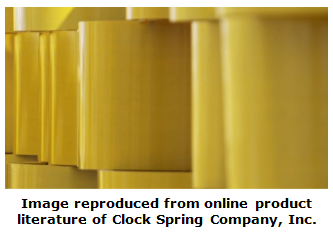COMPOSITE REPAIR SYSTEMS FOR FLUID SYSTEM COMPONENTS
Fluid conduit assemblies, such as pipelines and hydraulic circuits, are used to transport an assortment of fluids, such as water, oil, various natural and synthetic gases, sewage, slurry, hazardous materials, and the like. Similar structures are utilized for transmitting electrical and fiber optic cabling across vast expanses of land in establishing telecommunication networks. The most commonly used conventional methods for repairing damaged fluid system components, such as carrier pipes, include the replacement of the component or the welding of a repair sleeve over the damaged section of the component.
Such conventional remediation methods generally require a costly interruption in system operation until the repair is completed. Furthermore, repairs based on such conventional remediation methods generally require the costly and difficult transportation and handling of heavy repair parts, such as steel replacement components or steel repair sleeves for the remediation of damage in a metal pipe.
It has been established over the last two decades that a composite repair system using a composite laminate can often provide a reliable and cost-effective means for repairing a damaged fluid system component. The installation of a composite laminate can often be performed without needing to interrupt operation of a fluid system. Furthermore, the materials that need to be transported and handled in order to install a composite repair system are lighter and less cumbersome than conventional repair materials, reducing the cost of making a repair as compared with replacing a damaged metal component or installing a metal repair sleeve.
There are four general types of composite repair systems:
- In one type of system, pre-cured plies of a composite material (such as a glass fabric or a carbon fabric in a cured thermoset polymer matrix) are "glued together" ply-by-ply by using an adhesive as they are wrapped around a fluid system component that is being repaired. The earliest commercial systems were based on this approach. The main disadvantage of this approach is the fact that pre-cured plies are generally quite rigid so that repairs can be difficult (and sometimes even impossible) to perform on some fluid system components, and especially on components possessing complex shapes.
![Clock Spring Company Clock Spring Company]()
- In another type of system, a dry fabric (such as a dry glass fabric or a dry carbon fabric) is wrapped around the fluid system component that is being repaired. The fabric is then impregnated with an uncured resin, and the resin is cured. This approach no longer appears to be used, however, because the incomplete wetting of a wrapped (and hence multilayer) dry fabric in the field can incur the risk of poor final cured composite quality.
- In another type of system, an uncured resin formulation is applied to a layer of a dry fabric before wrapping this layer of fabric (now in a wetted form) around a fluid system component. This approach is used in many composite repair systems comprising two-part (resin and hardener) epoxy resin formulations. Many such formulations cure thermally at moderate temperatures once the two parts are mixed. Consequently, the two parts must remain unmixed until the product is ready to be installed to prevent premature curing. There are some risks related to field technician performance during the impregnation of the fabric since the technician must start with a layer of dry fabric and impregnate it in the field before wrapping it around the fluid system component.
- In another type of system, a fabric (such as a glass fabric, a carbon fabric, or a carbon and glass hybrid fabric) is pre-impregnated in a manufacturing facility with an uncured resin. The resulting "wet" fabric (pre-impregnated with uncured resin) is packaged and transported to a repair site in a manner that protects it from premature curing. The wet fabric is subsequently removed from its packaging and wrapped around the fluid system component that is being repaired, and the resin is cured. Moisture-curable polyurethane resin is generally used in such systems. When using a resin formulation that can be protected reliably from premature curing, this approach is preferable because it eliminates many quality risks associated with impregnating the fabric with an uncured resin in the field by performing impregnation under controllable conditions in a factory.

American Society of Mechanical Engineers (ASME), Post-Construction Committee – 2 (PCC-2), Repair of Pressure Equipment and Piping, Article 4.1, “Non-Metallic Composite Repair Systems: High Risk Applications”, is an important industry standard for the qualification of composite repair systems for use in challenging applications involving the repair of fluid transport system components such as pipelines and pipework.
Existing commercial composite laminate materials targeted for use in repairing fluid system components are currently limited by the availability of only the thermal curing, moisture-activated curing, and moisture-activated curing with thermal postcuring methods for obtaining a load-bearing composite laminate. These composite materials, are, however, impractical for use in certain major applications, such as in sub-zero temperature environments (as in the Trans-Alaska Pipeline during the winter months) and in deep-sea pipeline repairs. The possibility of using electron beam cured composite repair systems in such environments is under exploration. In the case of deep-sea repairs, it is envisioned that the repair system would be transported to the location of the repair in a remotely operated vehicle (ROV) and applied by means of robotic technology.

